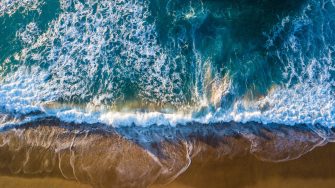
About
Rip currents
Since 2011, Professor Robert Brander, along with research colleagues and students within the School of BEES, have been working on both physical and social aspects of the beach rip current hazard. They have conducted measurements of rip current flow using GPS drifters as well as measurements of swimmer escape strategies using GPS. They have also conducted surveys and interviews of people who have been caught in rip currents. This study has been extended to NZ and the US and can be adapted to other countries/regions
Beach and surf hazards/safety
Recent projects conducted by students relating to surf safety have involved examining fatality statistics and costs of beach hazards relative to other natural hazards, drowning in developing countries, the relationships between tourist accommodation and unpatrolled, hazardous beaches, the role of social and mainstream media in communicating knowledge of coastal hazards, and the role of surfers and bystanders in making rescues on beaches. Much of this work is social science based.
-
Academic lead
Anna Attard (Honours 1st Class 2014) – Role and value of surfers saving lives
Felicity Bain (Honours 1st Class 2014) – Remote video imaging of Bondi Beach
Campbell McKay (Honours 1st Class 2013) – Drowning prevention on Ghanaian Beaches
Ben van Leeuwen (Honours 1st Class 2012) – Flow behaviour of topographic rip currents
Lara Edwards (Honours CivEng 2012) – Rip current morphology from remote video imaging
Erica Davey (Honours CivEng 2011) – Global variation in rip current density
-
$A42,864 – August 2013. The Rip Buoy Project. Australian Government Research in Business (RiB) Grant. Role – Lead Scientist.
$A396,000 – June 2011. Rip currents: an evidence based approach to managing the greatest beach hazard. Australian Research Council, Linkage Program LP110200134. Role – Lead Chief-investigator (with six others).
$A278,593 – June 2007.The Science of the Surf: the development and evaluation of a national campaign to reduce the risk of coastal drowning Australian Research Council, Linkage Program LP0774843 Role – Chief-investigator (with three others).
-
2012 Australian Government Eureka Prize for Promoting Understanding of Scientific Research
-
Facebook page: Dr Rip’s Science of the Surf
Twitter: @Dr_Rip_SOS
UNSW TV YouTube video ‘How to Survive Beach Rip Currents’
UNSW TV YouTube video ‘The Beach Survival Guide’
YouTube video: Rip Current Time Lapse
YouTube video: Something everybody should know about rip currents
-
Sydney Morning Herald ‘Rip Theories Put to the Test’ 24 November 2011
Sydney Morning Herald ‘Rips Biggest Killer’ 27 November 2013
ABC Catalyst ‘Rip Survivor’ 5 April 2012
-
My community beach safety education program ‘Science of the Surf (SOS)’ has involved community presentations to over 50,000 community adults, primary and high school students since 2005. YouTube videos relating to the SOS program have received over 2 million views since 2008. The SOS program also involves a popular dedicated website (www.scienceofthesurf.com) and Facebook page (Dr Rip’s Science of the Surf – 4300 followers). Recognition of the impacts of the SOS program is evident from a number of awards:
- 2011 NSW Water Safety Awards High Commendation Community Education Program of the Year.
- 2009 Australian Attorney General Safer Communities Award (for YouTube video ‘How to Survive Beach Rip Currents’).
- 2009 NSW Government Safer Communities Award (for YouTube video ‘How to Survive Beach Rip Currents’).
- 2007 NSW Department of Education and Training Frater Award for Excellence in School Performances.
- 2005 NSW Sport and Recreation AustSwim “Water Safety Event of the Year”.
-
I'm a member of the International Drowning Research Association (IDRA), the International Lifesaving Federation (ILS) Rip Current Alliance (RipSafe) Committee, the Coastal Education Research Foundation (CERF), and am actively involved with Surf Life Saving Australia on their Public Education Committee.
